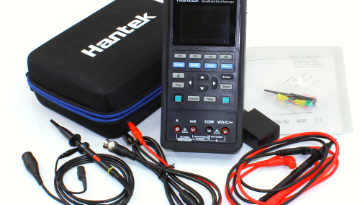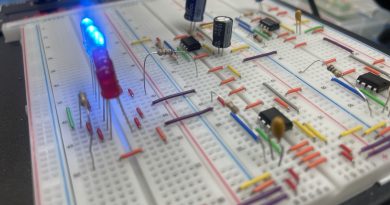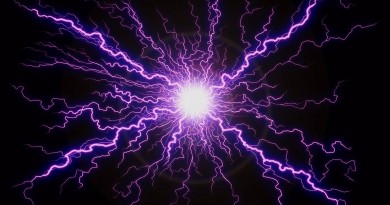Soldering Surface-Mount Components with a Hot-Air Soldering Station
Modern electronic PCB assemblies make use of surface-mount components (SMT). Although it is possible to solder some SMT parts with a traditionalsolder iron, it is impossible for components with terminations on the underside of the part. Parts with very small and closely spaced leads are also difficult to solder using a soldering iron. A hot-air soldering technique makes the job much easier and quicker, and produces robust solder joints that eliminate solder bridges on the leads.
The basic technique requires one to apply a sufficient amount of hot air to the component and PCB to produce the solder joint. The temperature and velocity of the hot air required will be dependent on the thermal mass of the materials and the type of solder being used. The temperature should be adjusted to assure the solder melts without damaging the component or the circuit board, and the volume of air flow should be as high as possible without disturbing adjacent SMT parts. Using a nozzle of the appropriate size and shape will minimize the effects on nearby parts. Circuit Specialists offers a wide variety of nozzles that will function on the vast majority of hot-air soldering stations.
The solder pads on the circuit board should have a sufficient amount of solder already melted and solidified before the component is placed. Additional flux is required to produce the desired solder joint and also to hold the part in place while the hot air is applied. Paste flux is normally used because it is easier to control and provides a tacky surface, preventing unwanted movement of the component.
Paste flux is available from a multitude of sources including Circuit Specialists and comes in different-sized syringes along with a dispensing needle to allow precise placement of the flux in a controlled amount.
Once the component is placed squarely on the solder pads, the hot-air soldering station wand is placed directly above the part and the heated air is applied until the solder on the pads of the PCB melts and attaches to the component’s leads. Excessive heat and time will damage the component and PCB, and insufficient heat and time will produce a cold solder joint. The three variables of temperature, air velocity, and time may have to be adjusted to produce the desired result.
Quality solder joints are a combination of proper technique as well as proper equipment and materials. The technique is a learned process which is optimized through experience. Using a hot-air soldering station to solder surface-mount components produces robust solder joints and saves valuable time while minimizing the potential for damage to the component and circuit board.


